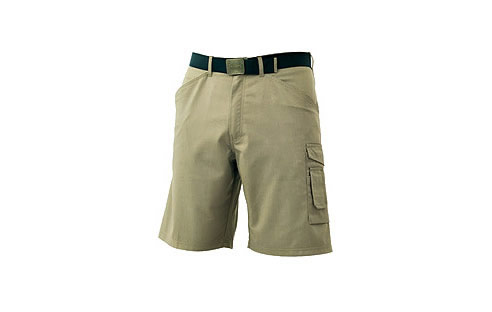NEWS ARTICLE ARCHIVES
Work Wear Tips for Summer from Proskill

One of the toughest seasons for trade work is summer. In winter, you can simply add layers of clothing, wear thermals, and drink plenty of tea, coffee or soup. In summer, there is still that minimum level of clothing you need to have on for protection... but every inch can feel as if it is suffocating you!
Today we are looking at workwear that comes to the rescue in summer, offering protection and convenience while keeping you as cool as possible.
Fabric weights for summer
In general, the lighter the weight of fabric that your work pants or work shorts are made from, the more comfortable they will be during summer. Often the same 'toughness' exists in lightweight fabrics as in heavyweight ones - the major difference is in the internal temperature. Workwear designed for summer use will often weigh between 5 and 9 ounce fabric weights.
Shorts versus pants
The natural progression as the weather gets warmer seems to be pushing the work pants towards the back of your closet, and bringing our the shorts once again. The choice isn't always as clear-cut, however. Before you automatically pull on your shorts on those mornings where 6am feels like noon, consider that:
Shorts are definitely not recommended by the Cancer Council of Australia for outdoor work - long pants offer the best sun protection. This is critical in a nation where around 1 in every 2 people will be diagnosed with skin cancer in their lifetime.
Work shorts don't provide as much protection from cuts, grazes and minor burns that long pants do. Think about the hazards that your work exposes your legs to.
Shorts don't (easily) allow the use of kneepads to protect your knees from the rigours of down-low work.
If you are working indoors in a relatively hazard -free environment, though, lightweight work shorts can feel like a blessing on hot days! Some of the drawbacks can easily be compensated for, as well. Although work shorts frequently have fewer pockets that long work pants do, lightweight and breathable tool belts and tool vests now exist to help distribute the load more evenly over your body. Use work shorts where your legs are relatively safe, and you want to be able to concentrate on your job... not your boiling bottom half!
Keeping cool - what not to do
It isn't just the shorts versus pants dilemma where the Cancer Council weighs in on the subject of your workwear. In the arena of public health, recommendations have changed immensely in the past decades. It is recommended by the Worksafe OH&S Council of Victoria, and Sunsmart Australia, that you:
- Not go shirtless to work, even on days that are warm rather than hot
- Not choose short sleeved work shirts or short pants if you'll be spending time outside
- Try not to work outside during peak UV times of day, which are generally between 10am and 3pm.
- Use artificial shade where possible to complement long sleeved work shirts and long work pants. Worksafe Victoria notes that in many situations, tradespeople are exposed to reflected or scattered UV light from surrounding surfaces, including concrete, metal and glass, even when working under shade.
3/4 pants Versus pants
One compromise that you can use in the summer months between the comfort of work shorts and the health and safety necessity of having long pants for outdoor work, is a pair of 3/4 pants. Combined with socks or boots, these can shade 100% of the skin on your legs, but give better airflow and a cooler experience than long work pants.
There are plenty of ways to stay cool, and get your work done more efficiently in summer without compromising your ultimate safety. Use tool vests with your work shorts to provide maximum comfort, as long as you are indoors. Use 3/4 pants in outdoor situations, and always wear long-sleeved shirts - and you'll be as cool and safe as possible.
|
|


